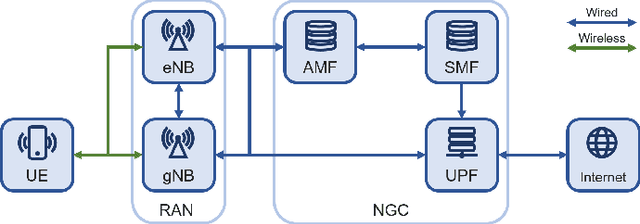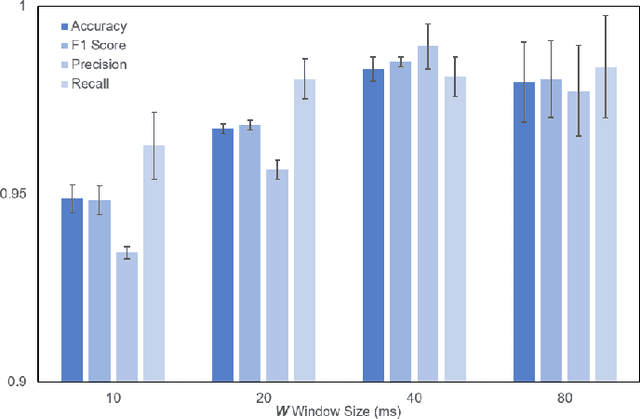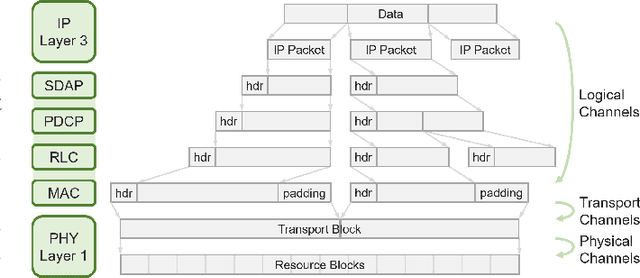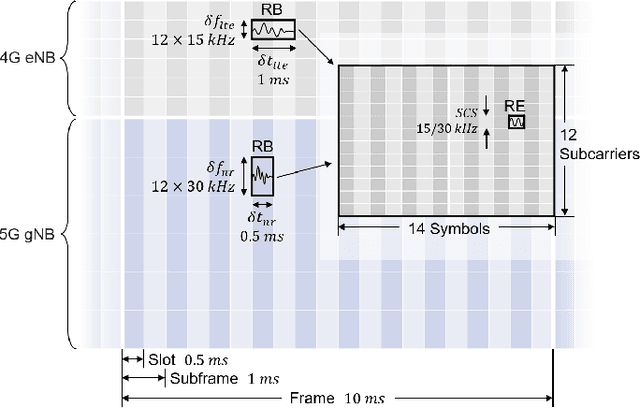Philippe Martins
LTCI
Timing advance and Doppler shift estimation in LEO satellite networks: A recursive Bayesian study
Jun 10, 2025Abstract:Low earth orbit (LEO) satellite based non-terrestrial networks are a key theme of the upcoming 6G networks. These space networks are proposed to be used for high-mobility use-cases like airplanes and vehicles. The initial access process between a base station (BS) and a user equipment (UE) involves timing advance (TA) value computation at the BS, requiring precise BS location information at the UE. It becomes more challenging in LEO satellite networks due to the fast moving LEO satellites and large pathloss, in addition to the mobile UE. This paper aims to compute the TA and Doppler shift experienced at the UE by modeling the joint system dynamics in a LEO satellite-mobile UE network through an extended Kalman filter (EKF) based recursive Bayesian framework. The framework accurately models the joint system dynamics by considering the LEO satellite acceleration. It constructs the Jacobian to linearize the inherent non-linearities present in the motion. Probabilistic insights regarding the state-update and propagation are also provided. The analytical framework factors in the limited satellite visibility at the UE and the satellite-UE geometry w.r.t. the earth center. The proposed framework is also useful when the satellite and UE clocks are not in sync, with the corresponding clock drift a function of the measured time difference of arrivals. Our results showcase the efficacy and robustness of the proposed EKF framework to estimate the TA and Doppler shift, even at very high UE speeds. The work is expected to be extremely useful in realizing LEO satellite based non-terrestrial networks.
Real-time Traffic Classification for 5G NSA Encrypted Data Flows With Physical Channel Records
Jul 15, 2023



Abstract:The classification of fifth-generation New-Radio (5G-NR) mobile network traffic is an emerging topic in the field of telecommunications. It can be utilized for quality of service (QoS) management and dynamic resource allocation. However, traditional approaches such as Deep Packet Inspection (DPI) can not be directly applied to encrypted data flows. Therefore, new real-time encrypted traffic classification algorithms need to be investigated to handle dynamic transmission. In this study, we examine the real-time encrypted 5G Non-Standalone (NSA) application-level traffic classification using physical channel records. Due to the vastness of their features, decision-tree-based gradient boosting algorithms are a viable approach for classification. We generate a noise-limited 5G NSA trace dataset with traffic from multiple applications. We develop a new pipeline to convert sequences of physical channel records into numerical vectors. A set of machine learning models are tested, and we propose our solution based on Light Gradient Boosting Machine (LGBM) due to its advantages in fast parallel training and low computational burden in practical scenarios. Our experiments demonstrate that our algorithm can achieve 95% accuracy on the classification task with a state-of-the-art response time as quick as 10ms.
A Combined Stochastic and Physical Framework for Modeling Indoor 5G Millimeter Wave Propagation
Feb 17, 2020



Abstract:Indoor coverage is a major challenge for 5G millimeter waves (mmWaves). In this paper, we address this problem through a novel theoretical framework that combines stochastic indoor environment modeling with advanced physical propagation simulation. This approach is particularly adapted to investigate indoor-to-indoor 5G mmWave propagation. Its system implementation, so-called iGeoStat, generates parameterized typical environments that account for the indoor spatial variations, then simulates radio propagation based on the physical interaction between electromagnetic waves and material properties. This framework is not dedicated to a particular environment, material, frequency or use case and aims to statistically understand the influence of indoor environment parameters on mmWave propagation properties, especially coverage and path loss. Its implementation raises numerous computational challenges that we solve by formulating an adapted link budget and designing new memory optimization algorithms. The first simulation results for two major 5G applications are validated with measurement data and show the efficiency of iGeoStat to simulate multiple diffusion in realistic environments, within a reasonable amount of time and memory resources. Generated output maps confirm that diffusion has a critical impact on indoor mmWave propagation and that proper physical modeling is of the utmost importance to generate relevant propagation models.
Robust methods for LTE and WiMAX dimensioning
Apr 04, 2012


Abstract:This paper proposes an analytic model for dimensioning OFDMA based networks like WiMAX and LTE systems. In such a system, users require a number of subchannels which depends on their \SNR, hence of their position and the shadowing they experience. The system is overloaded when the number of required subchannels is greater than the number of available subchannels. We give an exact though not closed expression of the loss probability and then give an algorithmic method to derive the number of subchannels which guarantees a loss probability less than a given threshold. We show that Gaussian approximation lead to optimistic values and are thus unusable. We then introduce Edgeworth expansions with error bounds and show that by choosing the right order of the expansion, one can have an approximate dimensioning value easy to compute but with guaranteed performance. As the values obtained are highly dependent from the parameters of the system, which turned to be rather undetermined, we provide a procedure based on concentration inequality for Poisson functionals, which yields to conservative dimensioning. This paper relies on recent results on concentration inequalities and establish new results on Edgeworth expansions.
 Add to Chrome
Add to Chrome Add to Firefox
Add to Firefox Add to Edge
Add to Edge